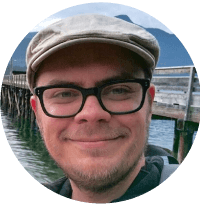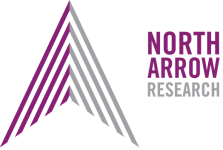Project Inception & Vision
The Early Days

 The GCD Software
The GCD Software ![]() was originally developed by Joe Wheaton (Utah State University Department of Watershed Sciences) and James Brasington (The University of Waikato, New Zealand). Joe and James started collaborating on geomorphic change detection back in 2004 during Joe’s PhD. During Joe’s Masters with Greg Pasternack, he became familiar with James’ early work on change detection and topographic surveying (Brasington et al. 2001, Brasington et al. 2003) and employed some of these methods in their work on the Mokelumne. James taught Joe how to code in Matlab, and they knocked up the first version (DoD 1) shortly thereafter. Joe’s goal writing the Matlab code was simply to make his own life easier for processing DoDs and keeping a handle on the housekeeping associated with this sort of analysis. He soon realized that many in the geomorphology community were struggling with the same problems and decided to build an easier-to-use piece of software so folks could do this analysis in GIS and avoid making silly and costly mistakes.
was originally developed by Joe Wheaton (Utah State University Department of Watershed Sciences) and James Brasington (The University of Waikato, New Zealand). Joe and James started collaborating on geomorphic change detection back in 2004 during Joe’s PhD. During Joe’s Masters with Greg Pasternack, he became familiar with James’ early work on change detection and topographic surveying (Brasington et al. 2001, Brasington et al. 2003) and employed some of these methods in their work on the Mokelumne. James taught Joe how to code in Matlab, and they knocked up the first version (DoD 1) shortly thereafter. Joe’s goal writing the Matlab code was simply to make his own life easier for processing DoDs and keeping a handle on the housekeeping associated with this sort of analysis. He soon realized that many in the geomorphology community were struggling with the same problems and decided to build an easier-to-use piece of software so folks could do this analysis in GIS and avoid making silly and costly mistakes.
Evolving Vision
Joe was frustrated by how frequently researchers and practitioners were not doing even the most basic minimum level of detection analyses to convince their audiences that the signals they were calculating were actually discernible from the noise in their DEM data (a particularly pronounced problem in fluvial environments where elevation changes are low). Joe thought that if you make it easy enough for people to do the analysis that they then had no excuse not to and that this might incrementally raise the standard of practice. More to the point, if the tool could help with some of the common methodological hurdles, then it might help the community focus more on interpreting the outputs, testing interesting hypotheses and developing new theories about morphodynamic evolution.
 When Joe arrived at Utah State University in 2009, Jack Scmidtt quickly connected him with Paul Grams at USGS and some ICRRR funding, which enabled the GCD 4 development. Joe met Philip Bailey (now of North Arrow Research then of ESSA Technologies) at a NSF LiDAR Workshop in 2010 in Boulder, Colorado. Joe was teaching a session on DoD 3 and Philip was teaching a session on the River Bathymetry Toolkit (RBT). Like Joe, Philip also did his PhD in Geography at University of Southampton. The two started scheming at the workshop over ways to turn GCD into a more professional piece of software. Joe secured funding to make those schemes a reality, and the two have been working on GCD in various capacities ever since.
When Joe arrived at Utah State University in 2009, Jack Scmidtt quickly connected him with Paul Grams at USGS and some ICRRR funding, which enabled the GCD 4 development. Joe met Philip Bailey (now of North Arrow Research then of ESSA Technologies) at a NSF LiDAR Workshop in 2010 in Boulder, Colorado. Joe was teaching a session on DoD 3 and Philip was teaching a session on the River Bathymetry Toolkit (RBT). Like Joe, Philip also did his PhD in Geography at University of Southampton. The two started scheming at the workshop over ways to turn GCD into a more professional piece of software. Joe secured funding to make those schemes a reality, and the two have been working on GCD in various capacities ever since.
Expanding Horizons
In 2015, James, Joe and Damia Vericat teamed back up to write a review article on the Morphological Approach for Gravel Bed Rivers (Vericat et al., 2017). This laid the groundwork for a 2016 proposal to the UK NERC which was successful, securing funds to enhance the existing software. This new project created a partnership between the GCD team and three regional councils in New Zealand along with the Scottish Environmental Protection Agency. This group collaborated to refine the functionality of GCD so that it could be used to support the management of gravel-bed rivers.
Development Team
 The newest version of the GCD is currently under development by North Arrow Research and ET-AL. Since GCD 5, Philip Bailey (North Arrow Research) has been the lead developer and architect of GCD. These days, Philip and Matt Reimer (North Arrow Research) are the primary developers of GCD. Matt has really raised the bar and exposed the team to a wealth of new technologies and simpler, more elegant solutions. Matt, Philip and Joe envisioned and launched the Riverscapes Consortium.
The newest version of the GCD is currently under development by North Arrow Research and ET-AL. Since GCD 5, Philip Bailey (North Arrow Research) has been the lead developer and architect of GCD. These days, Philip and Matt Reimer (North Arrow Research) are the primary developers of GCD. Matt has really raised the bar and exposed the team to a wealth of new technologies and simpler, more elegant solutions. Matt, Philip and Joe envisioned and launched the Riverscapes Consortium.
Other Significant Contributors
- James Hensleigh (now USGS, formerly USU ET-AL) was a major contributor to GCD 5 and 6 leading the development of the FIS Development Assistant and MBES Tools.
- Frank Poulson (formerly with ESSA) has been instrumental in the development of GCD 5 through 7.
- Sara Bangen (USU ETAL) has been instrumental in developing FIS models and the CHaMP GCD Testing.
- Nick Ochoski (formerly with ESSA) was part of the initial development of GCD 5.
- ESSA Technologies generously invested in kind donations of development time in GCD 5 development.
- Chris Garrard (USU RSGIS Lab) was the primary developer of GCD 4.
- Greg Pasternack has been an important sounding board throughout the development of GCD.
User Support and Testing
We are indebted to many helpful and patient beta testers, including all the participants of the GCD Workshops, Sara Bangen, Rocko Brown, Nicole Czarnomski, Kenny DeMeurichy, Steve Fortney, Paul Grams, Andrew Hill, Alan Kasprak, Eric Larson, Ryan Leary, Chuck Podolack, Robert Ross, Keelin Schaffrath, Carol Volk, Cara Walter, Richard Williams and Damia Vericat (among many others).



